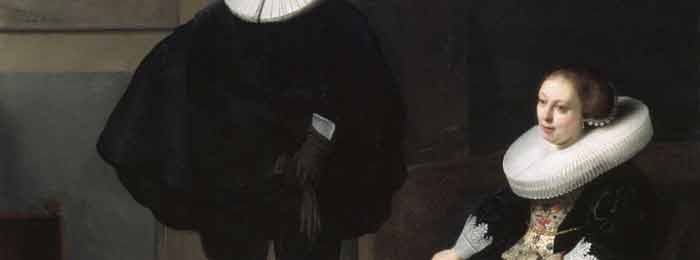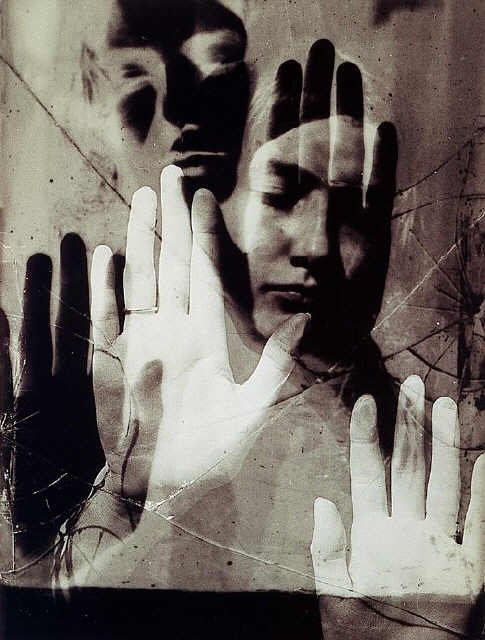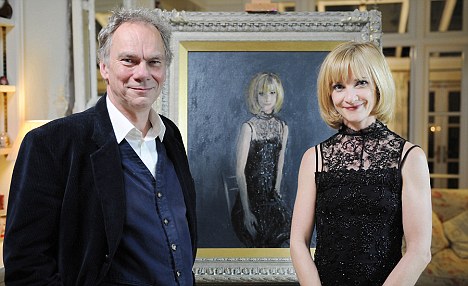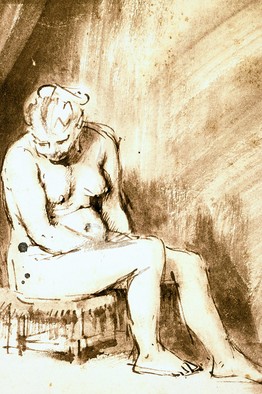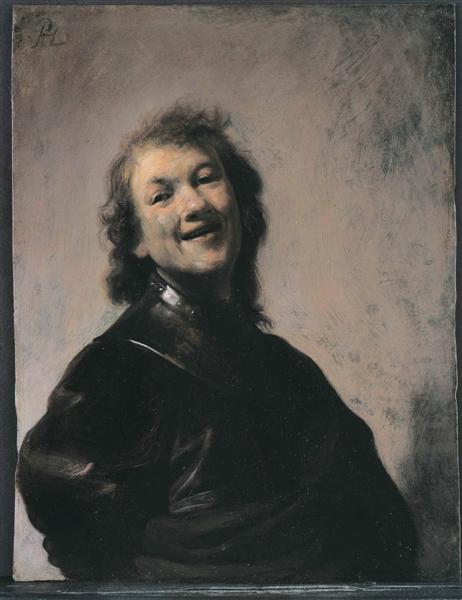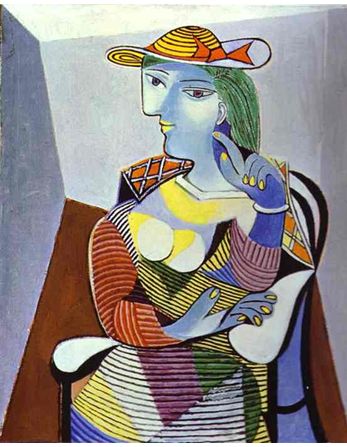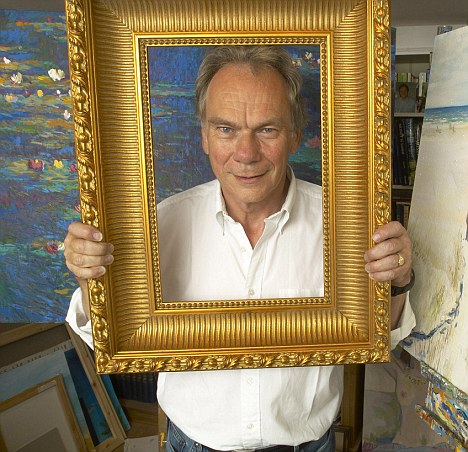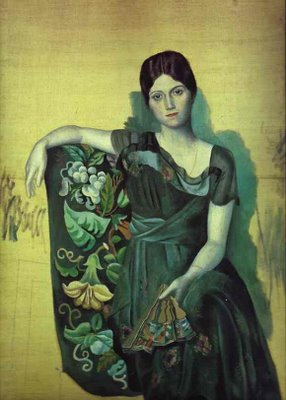On 25 Aug, 2011 With
Palettes of Famous Painters: The Degas palette The Degas palette above is from earlier in his career, when he was still using the earthy tones common to the Dutch tradition. It lightened considerably in later years as his subject matter altered. Although there are a number of prescribed ways in which to lay out oil paint – light to dark; as per the colour wheel; basic palettes of three colours and white – all artists begin by lining up pigments at the top of the palette and use the remainder of its space for mixing.
Read More
On 18 Jan, 2011 With
The biggest art theft in American history occurred at the Isabella Stewart Gardner Museum in Boston on March 18, 1990. The stolen paintings, including the one that hung in this frame, Rembrandt’s “Lady and Gentleman in Black,” remain unrecovered. It was the art heist of the century, and 20 years on, Boston billboards are being used to jog the public’s memory, reportsTom Moroney ART LOVERS who didn’t catch Rembrandt’s The Storm on the Sea of Galilee at the Isabella Stewart Gardner Museum before 1990 can now see it on electronic billboards outside Boston – courtesy of the FBI. Twenty years ago, on March 18th, the Dutch master’s only seascape, along with a dozen other artworks, disappeared from the museum. Two billboards…
Read More
On 4 Jan, 2011 With
Dora Maar and Picasso (1936-1944) In 1936 54-year old Picasso met Yugoslavian Dora Maar (1907 -1997), the photographer who documented Picasso’s painting of Guernica, the 1937 painting of Picasso’s depiction of the German’s having bombed the Basque city of Guernica, Spain during the Spanish Civil War. She became Picasso’s constant companion and lover from 1936 through April, 1944. Maar went back to painting and exhibited in Paris soon after Picasso left her for Françoise. Picasso referred to Dora as his “private muse”. In later years she became a recluse, dying poor and alone.
Read More
On 3 Jan, 2011 With
The true story of the downfall of an amateur artist who pulled off the world’s most audacious art fraud By LANEY SALISBURY The experts gathered at London’s Tate gallery watched in appreciative silence as two white-gloved curators carried the museum’s latest acquisitions into its boardroom. Paintings of birds by a highly regarded but little-known Fifties French artist named Roger Bissiere, they had been donated by Professor John Drewe, a distinguished scientist and businessman. On that April afternoon in 1990, everything about Drewe suggested that he was a gentleman of style and substance, from his pencil-thin moustache to his expensive suit. His bequests, however, were not all they seemed. Far from being the modern masterpieces Drewe claimed, they had, in fact, been…
Read More
On 22 Dec, 2010 With
Is it fake or is it Rembrandt? Over the years there has been considerable controversy over unsigned drawings that seem to be from the hand of Rembrandt Harmenszoon van Rijn, the Dutch painter and etcher who died in 1669. Since 1968, participants in the Amsterdam-based Rembrandt Research Project have halved the accepted list of genuine, “autograph” paintings by the master to about 300 pictures. (They also elevate new works to the list from time to time.) There are about 300 accepted first-state etchings. An exhibit at The Getty makes an effort to distinguish the real from the ersatz. Fifty-three of the small drawings on display are now generally presumed to be by Rembrandt. The remaining 50 have been reattributed to…
Read More
On 22 Dec, 2010 With
A self-portrait formerly considered a Rembrandt knockoff has been deemed a genuine early work of the Dutch master—and valued at $40 million. Rembrandt Laughing, executed on a small copper plate, was examined by Holland’s leading Rembrandt experts. A British art collector purchased the work late last year for $4.5 million from an auction house that had appraised it at $3,100. “It has an incredible presence,” said a Rembrandt authority. “The light has the most natural quality you can think of—and I love the naturalness of the laughing.”
Read More
On 20 Dec, 2010 With
The Daily Tele swallows a fake Picasso Would you fork out your redundancy money to buy a Picasso off the internet? Happens all the time. The Daily Telegraph’s Elizabeth Fortescue reported last week that a young Sydney woman took her online Picasso to an “antiques roadshow” in Dee Why the other day. She asked the expert if she’d done the right thing. The news was stunning. Fine art valuer Sue-ann Smiles immediately identified it as a Picasso. “I knew straight away. Quite frankly, (the painting) should be in the National Gallery of Australia. This is a cultural heritage piece,” she said. The woman told Ms Smiles she had bought the painting, sight unseen, from a private owner in Europe and that she only…
Read More
On 20 Dec, 2010 With
John Myatt, (born 1945), is a British artist and convicted forger who, with John Drewe, perpetrated what has been described as “the biggest art fraud of the 20th century”. Early life The son of a farmer, Myatt attended art school, and discovered a talent for mimicking other artists’ styles, but at first only painted for amusement and for friends. He worked as a songwriter for a time, and wrote the single “Silly Games”, a UK Top 40 hit for Janet Kay in 1979. He later worked as a teacher in Staffordshire. Painting When his wife left him in 1985, Myatt gave up teaching to spend more time with his children, and attempted to make a living by painting original works in the style of well known artists….
Read More
On 15 Dec, 2010 With
Fernande Olivier and Picasso (1904-1912) Artist model Fernande Olivier (1881-1966) was Picasso’s first long term relation and subject of many of Picasso’s Rose Period paintings (1905-07). Picasso met her after settling in Paris in 1904. Although Fernande was married, she stayed with Picasso for 7 years. Fernande modeled for other artists between 1900 and 1905 after which she moved in with “the Spanish artist”, Picasso, who then prevented her from modeling for others. Fernande’s having published selections from the memoirs of her life with Picasso infuriated the artist but eventually, at age 70, Picasso paid the ailing and bedridden Fernande a small pension. The full memoir was not published until 1988, “Loving Picasso”. In early 2004 the National Gallery in Washington, D.C. had an exhibition of…
Read More
On 14 Dec, 2010 With
Olga Khokhlova and Picasso (1917-1927) In 1917 ballerina Olga Khokhlova (1891-1955) met Picasso while the artist was designing the ballet “Parade” in Rome, to be performed by the Ballet Russe. They married in the Russian Orthodox church in Paris in 1918 and lived a life of conflict. She was of high society and enjoyed formal events while Picasso was more bohemian in his interests and pursuits. Their son Paulo (Paul) was born in 1921 (and died in 1975), influencing Picasso’s imagery to turn to mother and child themes. Paul’s three children are Pablito (1949-1973), Marina (born in 1951), and Bernard (1959). Some of the Picassos in this Saper Galleries exhibition are from Marina and Bernard’s personal Picasso collection.
Read More


